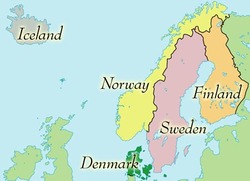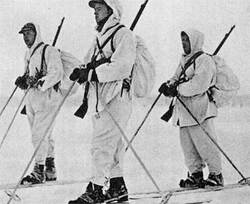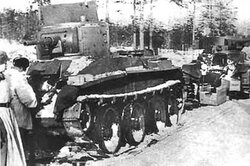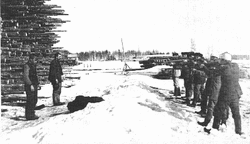-
PRESENTATION OF COUNTRY’S GOVERNMENT
_________________________________________________________________________________________________________
Finland is a democratic republic, based on the new constitution on 1 March 2000. Its political system is very close to parliamentary, but the President has powers, including the country's foreign affairs. Its political system is revealed to the balance between parliamentary and semi-presidential system.
At the executive power, the President of the Republic is elected for six years by direct universal suffrage. It has few powers, appoints the prime minister, who may dissolve Parliament and enact laws on which it has a veto. The Conservative Sauli Niinistö has held this position since 2012.
It sets the policy of the nation, has the legislative initiative and directs the public administration. Juha Sipilä held this position since May 29, 2015.
At the legislative level, Eduskunta is composed of 200 members elected for four years by proportional representation. It invests and censure the Government passes laws and amend the constitution. He is, since the legislative elections of April 2015, dominated by the Centre Party (Kesk) (49 seats out of 200), before the True Finns (PS) (38 seats), preservatives (Kok) (37 seats) and social Democrats (SDP) (34 seats).
Since May 29, 2015, the three largest parties of the Eduskunta (Kesk, PS and Kok) form the parliamentary majority supporting the government Sipilä.
REGIONAL GEOPOLITICAL POLITICAL CONTEXT
_________________________________________________________________________________________________________
Capital: Helsinki
Population: 5 491 054 (2015)
President: Sauli Niinistö
Official languages: Finnish and Swedish
Political system: Parliamentary republic
Change: Euro
Religion: Christianity
GEOGRAPHICAL SITUATION
_________________________________________________________________________________________________________
Finland is bordered by the Baltic Sea, specifically in the Gulf of Bothnia to the west and by the Gulf of Finland south. Its territory extends from both sides of the Arctic Circle in eastern Fennoscandia, making it a fully Nordic country outside Scandinavia. Composed of more than 3000 lakes and countless islands, including those of the autonomous Åland Islands, it occupies a total area of 338,145 square kilometers between Russia to the east, north Norway and Sweden northwest, making it the fifth largest country in the European Union.
ADMINISTRATIVE DIVISIONS
___________________________________________________________________________________________________
In the administrative point of view, Finland is divided into six provinces, 20 regions, the latter being divided into 446 municipalities.
FINLAND PROVINCES
___________________________________________________________________________________________________

The provinces of Finland are a former administrative division of Finland, disappeared on 1 January 2010 following a land reform.
Finland has historically been divided into several provinces. This division was made in 1634, at a time when Finland was part of the Kingdom of Sweden. These historical provinces then underwent several redistricting. The last reorganization took place in 1997 and brought the total to six (twelve earlier), themselves divided into twenty regions.
EXTERNAL REGIONAL CONFLICTS OR TENSIONS
_________________________________________________________________________________________________________
Currently, Finland is a fairly neutral country that is not in conflict with any other country. I'll tell you about the winter war was a conflict between the Soviet Union and Finland (1939-1940).
This war started because of the Soviet invasion of Finland November 30, 1939 and ends with the Moscow Peace Treaty March 13, 1940.
The cause of the war was that the Soviet Union wanted Finnish territories. Finland refused and was then made by the Russians invade. The USSR therefore wanted to invade the whole of Finland and wanted to set up a Finnish Communist government.
The Soviets possessed more than three times as many soldiers as the Finns, thirty times as many aircraft, and a hundred times as many tanks. Because of these factors, and high morale in the Finnish forces, Finland repelled Soviet attacks for several months, much longer than the Soviets expected.
Hostilities stopped in March 1940 with the signing of the Peace Treaty of Moscow. Finland ceded territory representing 11% of its area and 30% of its economy to the Soviet Union. The Soviet losses were heavy, and the country's international reputation has suffered. While the Soviet Union has not conquered the whole of Finland, Soviet gains have exceeded their requests before the war. They won some territory along Lake Ladoga in northern Finland. Finland retained its sovereignty and enhanced its international reputation.
INTERNAL CONFLICTS OR TENSIONS
_________________________________________________________________________________________________________
The civil war in Finland
While from March 1917 no longer exists in Finland no police force or military agreed to maintain order, the left and the right began to put their own security forces on foot, leading to the emergence of two separate and independent military body, the Red guards and White. An atmosphere of political violence and fear has evolved rapidly among Finns. Fighting broke out in January 1918 due to actions both by the Reds as whites in both military and political escalation.
The Whites won the war against the Reds, which ended the Russian hegemony in Finland and made him pass the country under German influence. The Senate then tried to establish a constitutional monarchy headed by Frederick of Hesse but after the German defeat, Finland finally became an independent and democratic republic, putting an end to the kingdom of Finland.
 your comment
your comment








